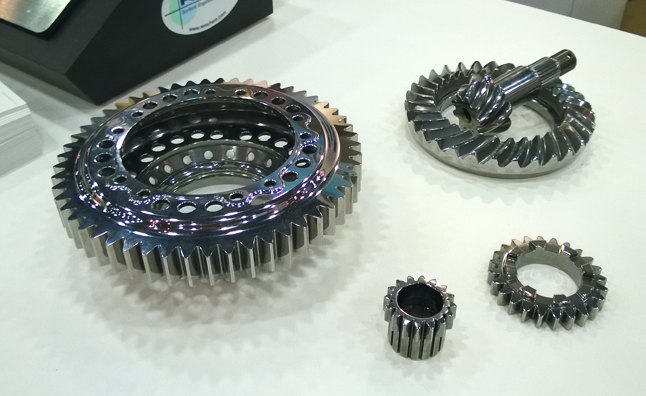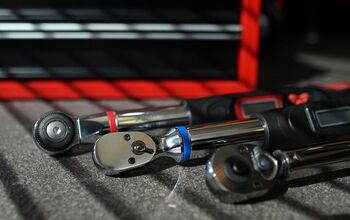How One-Millionth of an Inch Can Add BIG Horsepower

Automotive finishes are important. Car buyers expect their new rides to have lustrous, durable paint that withstands the test of time. Nobody wants to see dull spots or drips on their $35,000 baby. Not surprisingly a vehicle’s internal components can also benefit from careful attention to detail.
A company called REM Surface Engineering has developed a fast and cost-effective way of micro finishing internal components down to one millionth of an inch, the benefits of which are surprising.
Speaking with AutoGuide.com at the SAE 2014 World Congress, REM product manager Bill Nebiolo said that in racing applications “we’re looking at 1.5 to three percent retention of horsepower.” That’s a huge benefit and it’s all because of reduced friction.
Their special metal-finishing treatment can be used on a huge variety of automotive parts, from gears and camshafts, to roller bearings, tappets and connecting rods. Nebiolo said their process can be implemented “wherever you have contact surfaces.”
REM’s process is similar to media-tumbling, but with a twist. In traditional media tumbling parts are placed inside a drum that’s loaded with a special abrasive-impregnated media. As the drum turns and vibrates the media polish the components.
However, REM’s system is different. “[It] contains no abrasives” Nebiolo said. Instead it features a special chemical cocktail that reacts with metal components (the exact mixture varies depending on the alloys in question). The non-abrasive media is only used “as a wiping agent.”
The chemicals in question soften the metal – but only one molecule deep – which allows the media to brush it away, leaving a smooth finish in its place. This sounds complicated but in practice it’s fairly simple.
According to Nebiolo it’s “the last little bit of super finishing.” But it doesn’t just help reduce friction and improve efficiency; it can actually help eliminate stress points as well. These are places in metal components where cracks can form, leading to part failure. Obviously that’s not a good thing.
REM Surface Engineering’s metal-finishing procedure is surprisingly quick. “We’ve developed a new high-speed process” Nebiolo said; “We’re doing this in three to four minutes.” Obviously there are numerous variables, from part size to the volume an automaker requires, but still, that’s pretty impressive considering how beautiful the components look when they’re done.
Their super-finishing procedure is already used in racing applications, as well as the aerospace industry and medical devices like artificial knees. They’re looking to grow their business to include mass-market vehicles.

Born and raised in metro Detroit, Craig was steeped in mechanics from childhood. He feels as much at home with a wrench or welding gun in his hand as he does behind the wheel or in front of a camera. Putting his Bachelor's Degree in Journalism to good use, he's always pumping out videos, reviews, and features for AutoGuide.com. When the workday is over, he can be found out driving his fully restored 1936 Ford V8 sedan. Craig has covered the automotive industry full time for more than 10 years and is a member of the Automotive Press Association (APA) and Midwest Automotive Media Association (MAMA).
More by Craig Cole



































Comments
Join the conversation